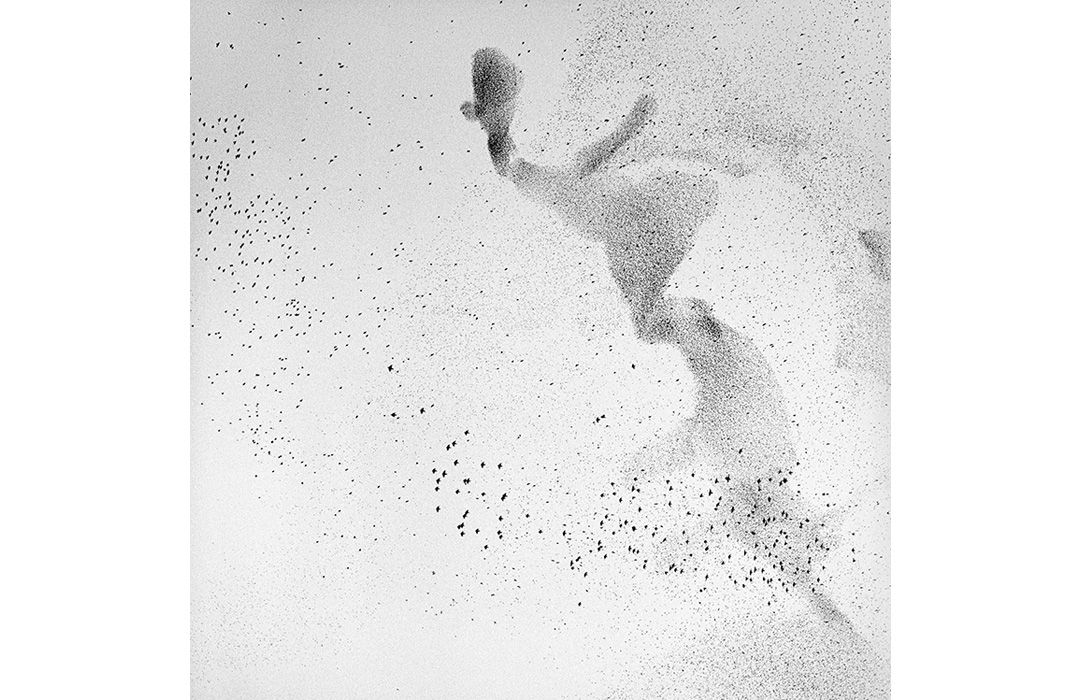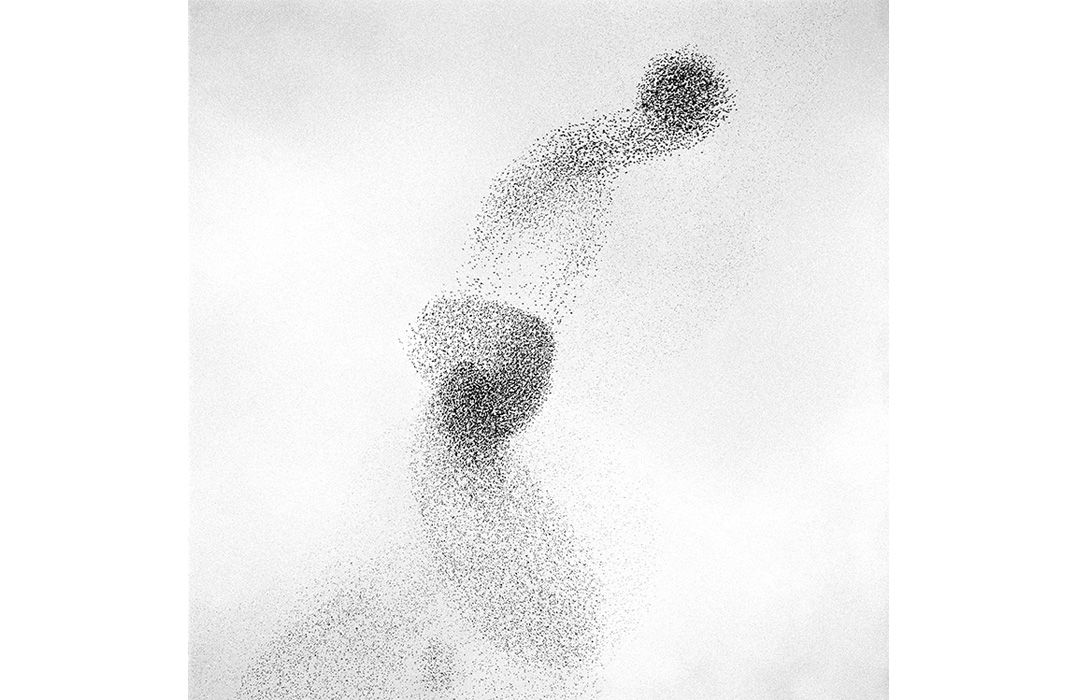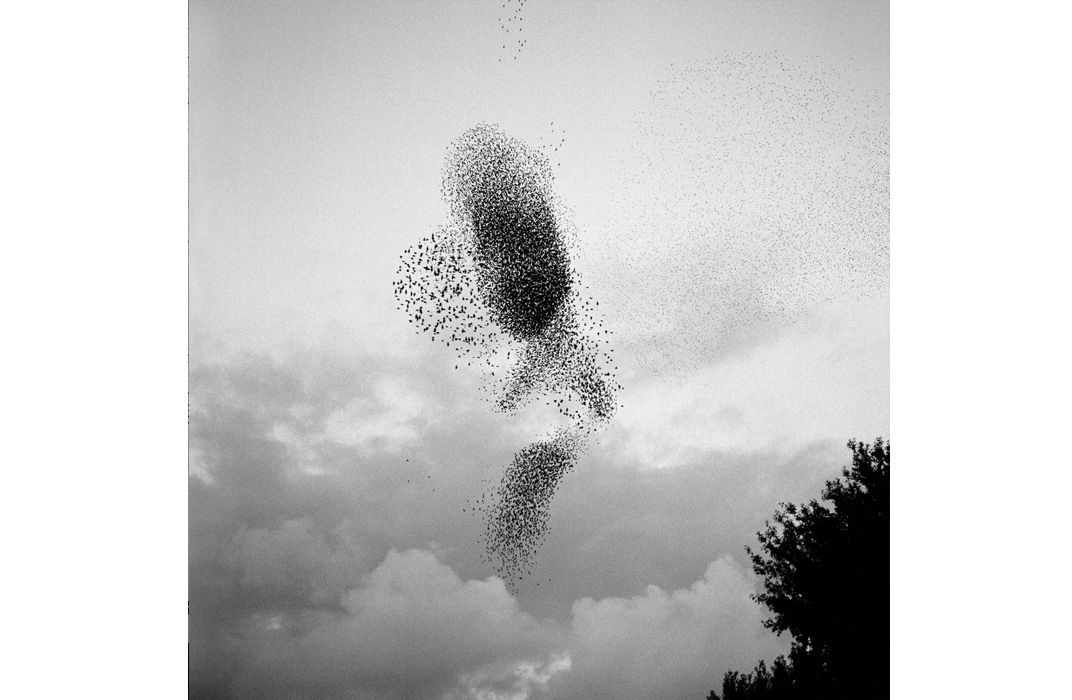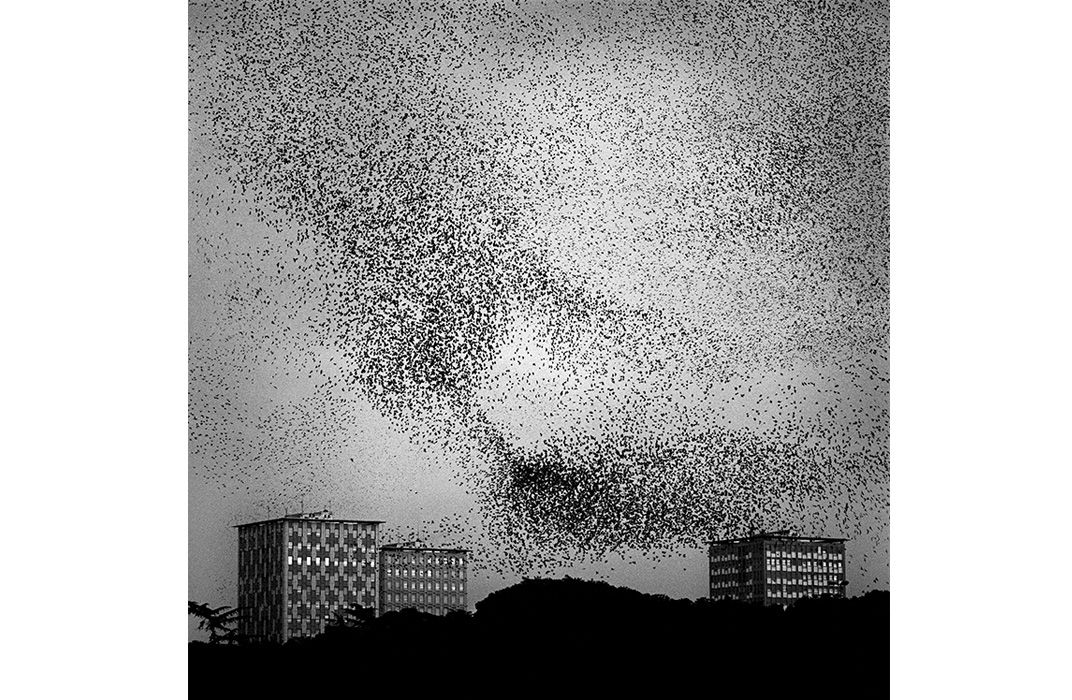Beautiful and Eerie Photographs of Starlings in Flight
Photographer Richard Barnes captures the mesmerizing geometric patterns created by flocks of European starlings
Photographer Richard Barnes's series "Murmur" might seem more like abstract pointillist art than nature photography, but look closely, and you'll see the the dark amorphous shapes are actually thousands of densely packed starlings, flying in unique formations known as murmurations.
Scientists still don't know exactly why starlings form these magnificent shapes, although predation avoidance is the leading theory (PDF), or how individuals are capable of turning, sometimes by the thousands, in near perfect unison, but with the help of high-powered video analysis and computational modeling, they are beginning to understand how they collectively behave. What they've found is that the flight patterns are best described by equations more commonly found in physics than biology. As Wired wrote in 2010:
Mathematical analysis of flock dynamics show how each starling’s movement is influenced by every other starling, and vice versa. It doesn’t matter how large a flock is, or if two birds are on opposite sides. It’s as if every individual is connected to the same network...
The closest fit to equations describing starling flock patterns come from the literature of “criticality,” of crystal formation and avalanches — systems poised on the brink, capable of near-instantaneous transformation.
Barnes, who captured the murmurations in a suburb of Rome, does not delve into the science of murmuration in his current exhibition; instead, his photographs focus on their strange, haunting beauty. The flocks, suspended against grey skies, offer viewers a glimpse into the otherworldliness of animal life, and represent the connection between nature and art.
The photographs, along with a second exhibit, "Refuge," is on display at New York's Foley Gallery (97 Allen Street, Lower East Side) through February 23.
/https://tf-cmsv2-smithsonianmag-media.s3.amazonaws.com/accounts/headshot/natasha-geiling-240.jpg)
/https://tf-cmsv2-smithsonianmag-media.s3.amazonaws.com/filer/40/c0/40c034df-6b4e-4156-9905-3f479e6aabc3/richard-barnes-murmur-1.jpg)
/https://tf-cmsv2-smithsonianmag-media.s3.amazonaws.com/filer/42/9c/429c6fec-0403-4c96-879a-6bc0636549af/richard-barnes-murmur-14.jpg)

/https://tf-cmsv2-smithsonianmag-media.s3.amazonaws.com/filer/03/22/03222a84-70e8-4c4a-ab89-a002f4d16360/richard-barnes-murmur-12.jpg)
/https://tf-cmsv2-smithsonianmag-media.s3.amazonaws.com/filer/35/bc/35bc5782-0c5d-4dae-a974-00243b72c040/richard-barnes-murmur-5.jpg)

/https://tf-cmsv2-smithsonianmag-media.s3.amazonaws.com/filer/77/3e/773e2873-1a82-441f-b56c-3d93d76693e3/richard-barnes-murmur-21.jpg)



/https://tf-cmsv2-smithsonianmag-media.s3.amazonaws.com/accounts/headshot/natasha-geiling-240.jpg)